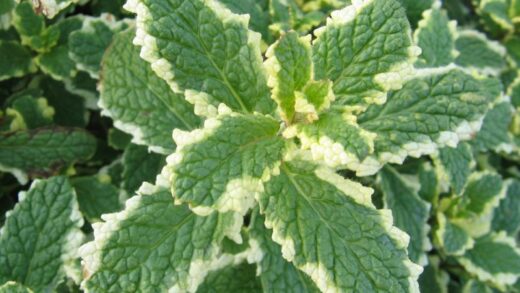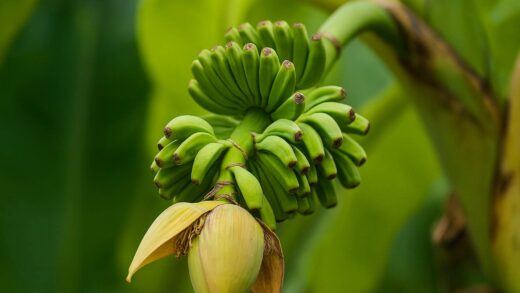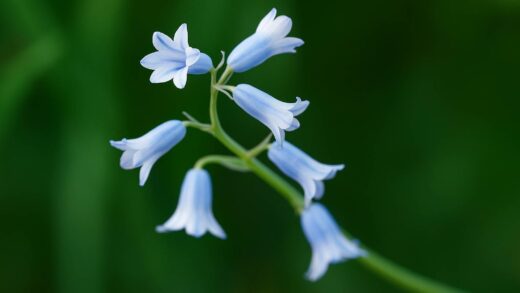Sunlight is the fundamental source of energy that drives plant life, and for beans, an adequate supply of light is a non-negotiable requirement for vigorous growth and productive yields. As a crop that thrives in the warmth of summer, beans have evolved to be highly efficient at converting light energy into chemical energy through the process of photosynthesis. This process fuels the development of everything from the leaves and stems to the flowers and the nutritious pods and seeds that are the ultimate goal of cultivation. Understanding the specific light requirements of beans—both in terms of intensity and duration—is essential for selecting an appropriate planting site and ensuring the plants can reach their full productive potential.
Beans are classic full-sun vegetables, meaning they require a minimum of six to eight hours of direct, unfiltered sunlight each day to perform optimally. This substantial amount of light is necessary to fuel the high energy demands of photosynthesis, the process where plants use light, water, and carbon dioxide to create sugars for energy and growth. When beans receive ample sunlight, they are able to produce lush foliage, develop strong stems, and, most importantly, generate the energy needed to produce a prolific number of flowers and pods. A location that receives sunlight throughout the morning and early afternoon is typically ideal.
The intensity of the sunlight is as important as the duration. Strong, direct light allows the photosynthetic machinery within the leaves to operate at peak efficiency. In a well-lit environment, the plant can produce more than enough energy to support its basic metabolic functions, with the surplus energy being directed towards reproductive efforts—that is, making beans. This is why beans planted in a bright, open area will almost always outperform those planted in a location with partial shade or that is overshadowed by taller plants, trees, or buildings.
The orientation of the garden rows can also play a role in maximizing light interception. In the northern hemisphere, planting rows in a north-south direction can help to ensure that plants receive even sunlight on both sides as the sun travels across the sky from east to west. This prevents one row from excessively shading the next. For pole beans growing on a trellis, orienting the trellis to capture the maximum amount of sun, often also in a north-south line, will promote even growth and productivity along the entire structure.
Ultimately, the selection of the planting site is the most critical decision related to light. Before planting, it is wise to observe the proposed garden area throughout the day to accurately gauge how many hours of direct sun it receives. An area that seems sunny in the morning might be in deep shade by the afternoon. Fulfilling this basic requirement for abundant light is the first and most important step in setting the stage for a successful and bountiful bean harvest.
More articles on this topic
The effects of insufficient light
When bean plants do not receive enough sunlight, they exhibit a range of predictable and detrimental symptoms. The most obvious effect is a condition known as etiolation. In an effort to reach for more light, the plants will grow unusually long, spindly, and weak stems. The distance between the leaf nodes, known as the internodal space, will be much greater than on a healthy, sun-grown plant. This leggy growth results in a plant that is structurally weak and may be unable to support itself, making it more prone to lodging or breaking in the wind.
In addition to etiolation, the foliage of a light-deprived bean plant will often be a pale green or even yellowish color. This is because sunlight is essential for the production of chlorophyll, the pigment that gives leaves their green color and is central to photosynthesis. With less chlorophyll, the plant’s capacity to produce energy is severely hampered. The leaves may also be smaller than normal, and the overall size and vigor of the plant will be noticeably reduced compared to its counterparts growing in full sun.
The most significant consequence of insufficient light for the gardener is the impact on yield. A bean plant that is struggling to produce enough energy for its own vegetative survival will have very little surplus to invest in flowering and producing pods. As a result, plants grown in shady conditions will produce far fewer flowers, and many of the flowers that do form may fail to set pods. The pods that do manage to develop are often smaller, of poorer quality, and take longer to mature. In very low light conditions, a bean plant may not produce any harvestable pods at all.
Furthermore, plants that are weakened by a lack of light are often more susceptible to pests and diseases. The weak, tender growth of an etiolated plant can be more attractive to certain pests. Additionally, shady, cool, and damp conditions with poor air circulation—often found in low-light areas—create a perfect microclimate for the development of fungal diseases like powdery mildew. Therefore, providing adequate sunlight is not just about maximizing yield; it is also a key component of preventative plant health care.
Photoperiodism in bean varieties
Photoperiodism is the physiological response of a plant to the length of the day, or more accurately, the length of uninterrupted darkness. This response can control when a plant transitions from vegetative growth to flowering. Plants are often categorized as short-day, long-day, or day-neutral. Short-day plants flower when the day length is shorter than a certain critical period, while long-day plants require days longer than a critical period to initiate flowering. Day-neutral plants, as the name implies, will flower regardless of the day length, based instead on reaching a certain stage of maturity.
Most modern bush and pole bean varieties (Phaseolus vulgaris) are considered to be day-neutral. This is a highly desirable trait that has been selected for by plant breeders, as it means these beans can be grown successfully across a wide range of latitudes and at different times of the growing season without their flowering time being restricted by a specific day length. This allows for flexibility in planting schedules, including succession planting throughout the spring and summer, to ensure a continuous harvest.
However, it is important to be aware that some heirloom or specialty bean varieties, particularly those originating from tropical or subtropical regions, can exhibit sensitivity to photoperiod. For example, certain types of lima beans or runner beans may be short-day plants. If a short-day variety is planted in a region with very long summer days, it may continue to grow vegetatively for a long time, producing a great deal of foliage but failing to flower until the days naturally begin to shorten in the late summer or early autumn.
This can be a source of frustration for a gardener who is unaware of the variety’s photoperiodic requirements. If the plant only begins to flower very late in the season, there may not be enough time for the pods to fully develop and mature before the first frost arrives. Therefore, when choosing a bean variety, especially an unfamiliar heirloom, it is beneficial to research its specific characteristics. Selecting day-neutral varieties or those known to be adapted to one’s specific region is the surest way to avoid any issues related to photoperiodism and ensure a timely and successful harvest.
Strategies for maximizing light exposure
In gardens where space is limited or where surrounding trees and buildings cast unavoidable shadows, there are several strategies that can be employed to maximize the amount of light the bean plants receive. One effective technique is to use reflective surfaces to bounce additional light onto the plants. A wall or fence painted white and situated to the north of the bean patch can reflect a significant amount of diffuse light back onto the plants, supplementing the direct sunlight they receive. Even temporary surfaces, like a piece of reflective mulch or foil laid on the ground, can help to increase the light levels around the lower parts of the plants.
Careful planning of the garden layout is another crucial strategy. When planting a garden with a variety of crops, the tallest plants, such as trellised pole beans, corn, or sunflowers, should be situated on the north side of the garden bed. This placement ensures that they will not cast a shadow over the shorter crops, like bush beans, lettuce, or carrots, as the sun moves across the sky. This simple principle of “tallest to the north” is fundamental to designing a light-efficient garden and ensuring all plants have equitable access to the sun.
For pole beans, the type of support structure used can also influence light exposure. A flat, single-plane trellis allows for good light interception, but an A-frame or teepee structure can be even more efficient at capturing sunlight from different angles throughout the day. Spacing the plants appropriately along the support is also vital. Overcrowding the plants will lead to excessive self-shading, where the upper leaves block light from reaching the lower ones. This can reduce the overall productivity of the plant, as the shaded lower leaves become less efficient. Proper spacing ensures that light can penetrate deeper into the plant canopy.
Finally, for gardeners with severely limited sunlight, growing beans in containers offers a flexible solution. Containers can be moved throughout the day to “chase the sun,” following the brightest spots in a yard, patio, or balcony. While more labor-intensive, this method can make it possible to grow a successful crop of beans even in a location that does not have a single spot with six to eight continuous hours of sun. Choosing compact bush bean varieties is ideal for container gardening and can provide a rewarding harvest even in less-than-ideal light conditions.

















